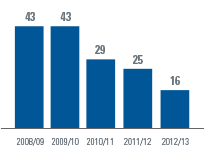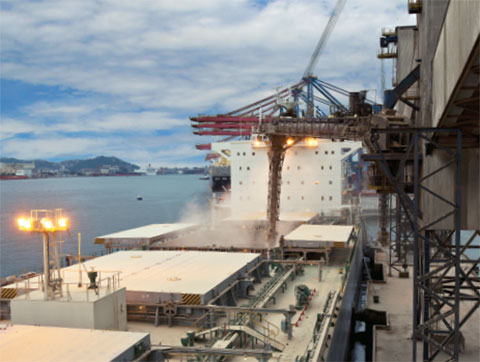Fundamentals in Agribusiness





One of the most important services Bunge provides to the world is the effective management of trade flows. Through efficient logistics, skilled risk management and field-to-fork integration, we ensure that customers get the products they need, regardless of the weather outside.
The past few years have kept us busy. Production shortfalls around the world have led to dramatic shifts in trade flows. 2012 was no exception. How Bunge managed through a very challenging corn market last year provides a snapshot of what we do and how we produce value for customers and shareholders.
Severe drought in the U.S. led to massive shortfalls in corn production. In fact, when combined with a short 2011 harvest, U.S. corn production was 100 million tons lower than trendline. The scale of this shortfall was immense—something not seen in a generation. To put it in perspective, total global trade in corn is also about 100 million tons. When combined with relatively steady demand, this supply reduction led to high prices and volatility.
Bunge managed the changes by acting quickly and in a globally coordinated manner. We leveraged our market insight, risk management skill and global asset network to bridge gaps in supply and link customers with new origins.
Key to our approach was increasing our purchases of corn in Brazil. We switched our origination program from the U.S. to take advantage of Brazil's August safrinha crop, and increased our Brazilian origination by roughly 6 million tons.
Simply put, we bought from farmers early and were ready to serve customers when they came to the market. We shifted product flow through our domestic logistics network, including rail and port facilities, and in our ocean freight program. Where we had planned to ship soy, we shipped corn. All of these steps were coordinated at regional and global levels, by product line managers, as well as by commercial, logistics and origination teams.
We have always believed that to be successful in agribusiness a company needs a global asset network, excellent risk management and a diverse product portfolio. Value shifts from region to region and along the chain. To capture it—to serve customers—you have to be everywhere and manage that global business seamlessly. Bunge is and does.
